Combat aircraft. Find, chase, kill!
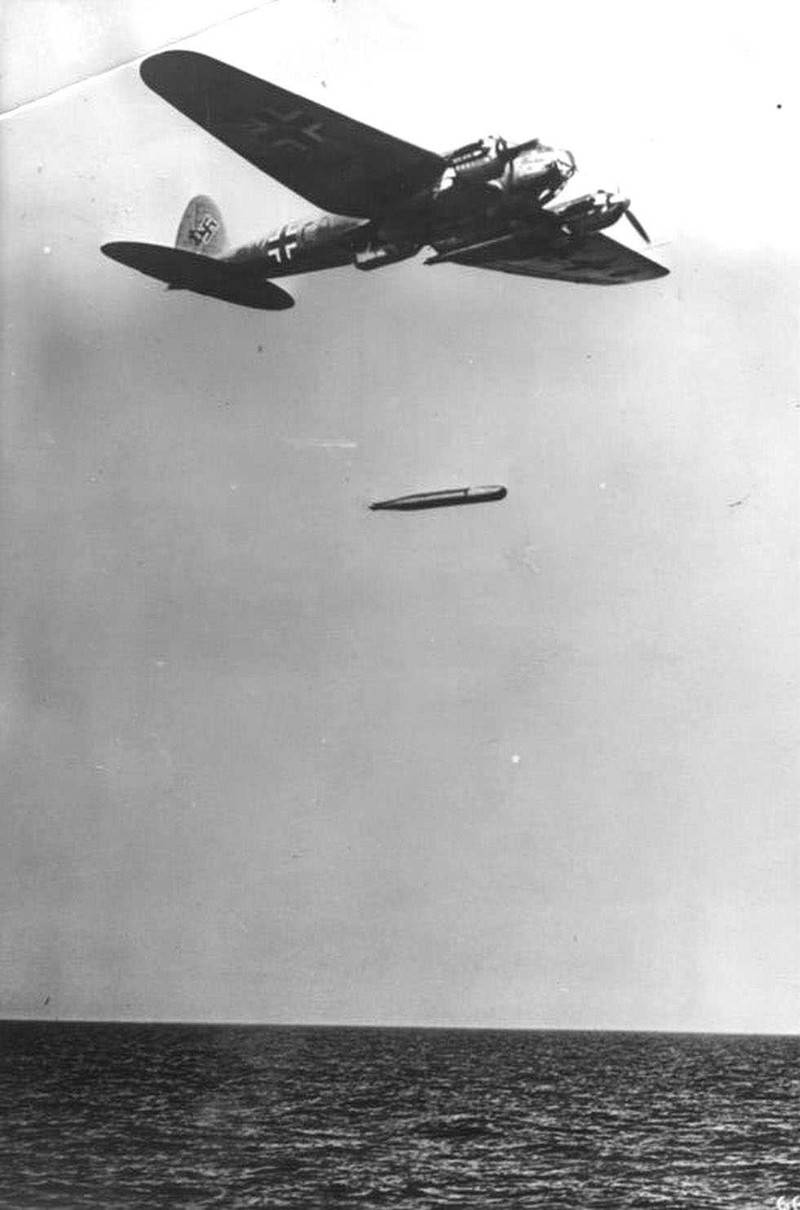
For quite a long time I thought about which pilots can be considered the most desperate. Of course, everyone who took to the skies during the Second World War were people of a strong nervous system. I would single out night fighters and especially bombers, since their work was not easy. Yes, and attack aircraft pilots on the IL-2 were also people deserving admiration, because shoveling the front line of the enemy’s defense, when everything that can shoot at you in a panic is very difficult.
But it seems to me that the most reckless were naval pilots. And torpedo bombers and in general - the elite. If a horizontal bomber could dump everything that was boiling inside it from a height, then the torpedo bomber had to descend and fly to its target. Under fire not only targets, but also neighbors. And before that, they still had to find these grains of sand in the endless ocean, hoping only for accurate intelligence data and their navigator.
Yes, the Americans, British and Japanese were very good fighting in the waters of the Pacific and Indian Oceans. But there were more chances to survive in any case. Still, the warm waters of the Pacific Ocean in the battlefields are not the Arctic for you.
So the most, in my opinion, are the crews of German torpedo bombers who were looking for ships of the North Atlantic convoys in the white expanses of the Arctic, in the conditions of the polar night and other pleasures of our North.

And a very important aspect: the crews of the ships that opposed them. The Northern Fleet was the most combat-ready fleet of the USSR, plus the Americans and British on the ships of the convoys knew what they were doing and the faint of heart did not go to the Soviet Union. I'm just talking about ours.
So it was very difficult to implement the principle of “Find, catch up, kill” in the Arctic.
And today we will talk about the planes that attacked convoys. Specifically, about Heinkel torpedo bombers.
Having paid tribute to the “shoemaker” He.59 at one time, I will now note that by the beginning of the Second World War, the command naval aviation the leading powers have a clear opinion that the torpedo bomber is everything, completely obsolete. Too slow and too clumsy. Easy prey for fighters, and it was easier for anti-aircraft gunners to aim at such an object.
However, the German Ministry of Aviation, most likely, was a little mistaken when ordering a Heinkel seaplane torpedo bomber in 1935.
In general, for the development of a project for a multi-purpose seaplane capable of carrying a torpedo, not only Ernst Heinkel Flugzeugwerke was proposed, but also the Hamburger Flugzeugbau. It was supposed to be a twin-engine twin-engine monoplane, designed with the latest aerodynamics.
As a result, the firms presented their projects Na.140 and He.115. The Heinkel aircraft won the competition.
The winning aircraft was quite beautiful. Very graceful monoplane with smooth contours. The floats were mounted under the engine nacelles on vertical streamlined racks. The aircraft was armed with three 250 kg bombs or one 700 kg torpedo. Defensive armament was represented by two MG.15 machine guns. One machine gun was on the course and was located in the glazed bow of the cockpit, the second protected the rear upper hemisphere and was installed at the end of the cockpit above the wing. The crew consisted of three people: a pilot, a navigator and a radio operator.
The heart of the aircraft were two 9-cylinder air-cooled engines VMW-132K. The engines coped well with the acceleration of a seaplane, and in 1938 the He.115 set several world records for seaplanes, flying distances of 1000 and 2000 km with a load of 500, 1000 and 2000 kg at a cruising speed of 326 km / h.
After such success, a pre-production batch of 10 cars was ordered. They differed from the prototypes in the absence of braces on the wing, instead of them there were two struts and N-shaped racks. Changed the appearance of the cab glazing, trimmers and stabilizer ends.
As a result, the weight of the empty aircraft was 5 kg, the takeoff weight was 415 kg. The maximum speed is 9 km / h, cruising - 400 km / h at an altitude of 315m, flight range - 300 km.
The record-breaking seaplane received attention in other countries. The German Ministry of Aviation did not have time to sign contracts for the manufacture of a serious batch of aircraft, when Norway ordered 6 aircraft for its fleet, and Sweden even more - 12. Denmark wanted to have 10 such aircraft.
And mass production began. The first model that came into the possession of the German naval aviation in 1939 was the He.115a-1. It was a pure torpedo bomber. He could also carry bombs, the bomb bay included three 250 kg bombs, and two bombs (or two external fuel tanks) could be hung on two holders under the wing.
The export model He.115a-2 did not differ structurally in any way, but the radio equipment, sights and machine guns were installed depending on the customer's desire.
Simultaneously with the release of the first series of aircraft, Heinkel began work on a modification of the He.115b-1. It was an interesting attempt to create a multipurpose aircraft through the use of "field kits" for modifications.
He.115b-1 / R-1 carried two cameras in the bomb bay.
He.115b-1 / R-2 received reinforced holders for one 500-kg bomb.
He.115b-1 / R-Z could carry two 500-kg LMA-III mines or one 1000-kg LMB-III mine.
The He.115b-2 was equipped with steel skis, which made it possible in theory to use it from ice fields.
He.115c-1 was an attempt to strengthen weapons. In the bow, next to the MG.15 machine gun, the MG-FF gun was installed. Instead of MG-FF, MG.151 / 15 was installed on part of the aircraft, and stationary MG.17 machine guns were mounted in the engine nacelles, firing backwards.
He.115c-1 / R4 - a variant of the smoke screening aircraft.
The He.115c-2 was produced as a minelayer carrying three 500 kg mines.
The takeoff weight of the aircraft increased and stepped over 10 kg.
But by the summer of 1940, the seaplane as a torpedo bomber was outdated. Its tasks could be solved by faster and less noticeable land aircraft. The release of the He.155 was discontinued, but the aircraft continued to serve as patrol aircraft, fortunately, the flight range and time spent in the air allowed this.
Heinkel could not accept this state of affairs, and in 1939 the He.115d project was proposed.
The new aircraft was equipped with 14-cylinder BMW-801MA engines with a take-off power of 1600 hp. The crew was increased to four people, the gunner was added. The armament was very decent: a fixed MG-151/20 cannon in the nose, an MG-81J machine gun on a mobile mount, twin MG-81Z machine guns on the upper and lower mobile mounts.
Takeoff weight increased to 12 kg, maximum speed also increased to 650 km/h. The flight range was 378 km, and the ceiling was 3 m.
One prototype was built, which was transferred to coastal aviation. But the work carried out on the He.115d was reflected in the already produced machines: during the 1942-43 years, all modifications that were in the He.115 units received reinforcements in the form of a twin MG-81Z in the rear of the cockpit and a MG-151 / 20 cannon under fuselage in the nose.
The combat use of He.115 was episodic. Until 1940, aircraft did not take part in hostilities at all, since seaplane squadrons were being re-equipped from He.60 to He.115 and crews were being trained.
The baptism of fire took place in Norway, as part of Operation Weserübung. Two squadrons of seaplanes were involved in the capture of Norway, and according to the plan of the operation, they were supposed to participate in the landing in Trondheim.
In general, it turned out to be a uniform madhouse. It must be remembered that Norway also purchased He.115a-2 for itself. By the time Operation Weserubung began, three He.115a-2s were based in southern Norway, and three in the north.
One He.115a-2 from the southern part was captured by the Germans in Stavanger.
One He.115a-2 flew to the north of the country and became part of the 3rd squadron.
One plane flew to Scotland.
But when the Germans captured a Norwegian seaplane, the Norwegians returned "courtesy for a courtesy" and captured two He.115b-1s from the German squadrons.
And the Norwegians still had six seaplanes, which they actively used, bombing the Germans in the Narvik area. Considering that the seaplanes of the “a” and “b” series did not differ in appearance, it was not easy to determine whether this aircraft was “our own” or not.
When Norway surrendered, one plane flew to Finland, and three He.115a-2 and one He.115b-1 flew to Scotland. There, two aircraft were converted into special operations aircraft. The armament was strengthened, and it amounted to 8 machine guns of 7,7 mm in the wings and two coaxial machine guns of the same caliber in rear-facing rifle mounts.
In October 1941, Lieutenant Haakon Offerdal flew to Malta on He.115a-2. The aircraft received Luftwaffe markings and was used for covert operations, such as taking two agents on board in broad daylight in Tripoli. Offendahl made many flights to North Africa on various missions, but in the end the aircraft was destroyed in the harbor of Malta during a raid.
The converted He.115b-1 made the same flights to Norway, but the risk of using a German aircraft near the British Isles was too great and such flights were abandoned.
German He.115 aircraft were consolidated into anti-submarine squadrons and operated from the Aalborg base in Denmark. The main task was to hunt for British submarines and escort convoys.
Not.115 participated in the "Battle of Britain", operating over the North Sea. They were engaged in patrolling, laying mines in the places of the alleged appearance of British ships, hunting for small vessels, throwing mines in the mouth of the Thames and Bristol Bay.
It was He.115 on August 26, 1940 that opened the combat account of German torpedo bombers in World War II. On this day, four He-115 torpedo bombers attacked the English convoy Hx.65A at Cape Kinchardhead and sank the transports Remuera (11 brt) and Sage York (445 brt).
In general, the use of He.115 cannot be called successful. The plane was unnecessarily slow and clumsy, and, accordingly, was an excellent target for fighters. Where the British fighters operated, there was no place for Heinkels.
Not surprisingly, in December 1941, all He.115s remaining in flight were sent to bases in Norway in order to operate from there on North Atlantic convoys bound for the Soviet Union.
In general, due to the small number of German aircraft in that direction and disgusting coordination with submarines, the convoys did not suffer heavy losses. Until the moment the PQ-17 convoy was sent, everything was exactly like that.
The first attack on the PQ-17 convoy was made by He.115. No results, except for the fact that on July 2 the commander of the 406th squadron, Futter, was shot down. True, his comrades saved him and the crew. But on July 4, pilots from the 906th squadron 1./Ku.Fl.Gr.906 sank the Christopher Newport transport with torpedoes. Well, when the guard ships abandoned the convoy, the aircraft and submarines staged a defeat for the convoy, sinking 23 ships out of 36.
In the north, He.115 was used until 1944. The last 12 He.115s from the torpedo-carrying 1./Ku.Fl.Gr.406 were decommissioned and decommissioned on May 10, 1944.
In general, the aircraft has earned a good reputation among the crews. Reliable, durable, well-controlled, taking a decent load - if not for the dynamic qualities, it would be, if not outstanding, then quite such a strong “middle peasant”. Although Ne.115 had quite good seaworthiness.
As a patrol, minelayer or anti-submarine aircraft, the He.115 was quite good. Still, there was not enough speed for a torpedo bomber.
LTX He.115c-1
Wingspan, m: 22,30
Length, m: 17,30
Height, m: 6,30
Wing area, square m: 86,80
Weight, kg
- empty aircraft: 6 880
- normal takeoff: 10 690
Engine: 2 x BMW-132K x 960 hp
Maximum speed km / h: 300
Cruising speed, km / h: 285
Practical range, km: 2 800
Maximum rate of climb, m / min: 200
Practical ceiling, m: 3 200
Crew, prs: 3
Armament:
- one fixed 15-mm cannon MG.151 forward;
- one 7,92-mm machine gun MG.15 in the bow installation;
- one 7,92-mm machine gun MG.15 in a mobile installation back;
- two 7,92-mm machine guns MG.17 in the tail of each engine nacelle;
- one LTF-5 or LTF-6b torpedo, or one 920-kg LMB-III mine, or two 500-kg LMA mines, or three 250-kg bombs in the compartment and two 250-kg bombs under the wing.
The second attempt to create a torpedo bomber was made by the brothers Siegfried and Walter Gunther, the creators of He.111. The aircraft turned out to be more than successful and went into production. Not immediately, but in Heinkel they turned to the topic of a naval bomber and a torpedo bomber.
The main one was taken by He.111F, on the basis of this aircraft, they worked out the theme of the first German torpedo bomber that was not a seaplane. The car received the name He.111J.
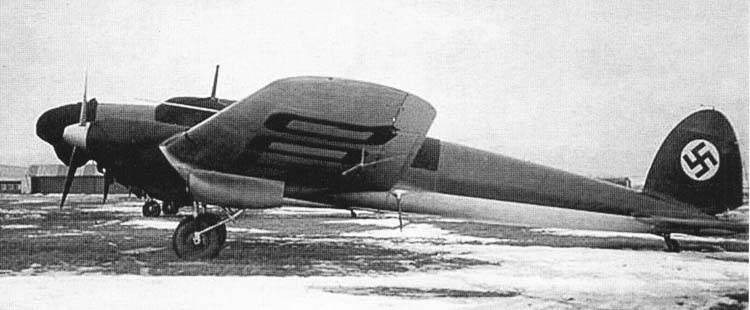
The Ne.111J was equipped with the proven 600 hp DB.950G engine. The main difference between aircraft and conventional bombers is not the use of a bomb bay. All He.111J weapons were suspended under the center section.
LT F5b torpedoes with a caliber of 450 mm had a length of 5,46 m, which made it possible to use them exclusively from an external sling. Two conventional bombs weighing up to 500 kg or four magnetic bottom mines could be hung on the same external nodes. The bomb bay, in the case of using an external suspension, was not involved at all.
Two prototypes were built, and then a small series of six He.111J-0 machines for testing, which were carried out at test centers in Leba and Bekenfjord. Based on the test results, the Luftwaffe ordered 90 He.111J-1 torpedo bombers, and then another 30 vehicles, in which bomb bays were modified so that the aircraft could also be used as conventional bombers.
These 120 torpedo bombers became in 1938 the basis of the Luftwaffe land torpedo bomber squadrons being created. "Junkers" Ju.88A-17 were created much later.
It is quite natural that it was He.111J-1 that became the platform for testing the L10 Friedensengel gliding torpedo.
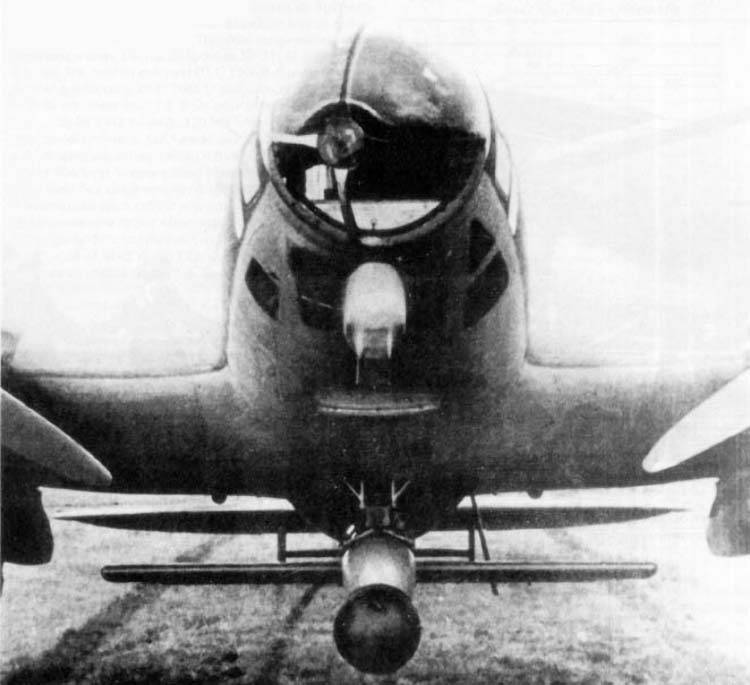
It was an interesting project. A wing with a span of almost 950 meters and a tail unit were attached to a conventional LT.3C aircraft torpedo. Such a torpedo was suspended clearly under the fuselage of the aircraft, since it was heavier than conventional torpedoes by more than 200 kg. An aircraft with such a torpedo could take off only from very good concrete strips, since the clearance between the torpedo rudders and the ground was very small.
The drop was carried out from a height of 2500 m approximately towards the target. After dropping a planning torpedo, a wire 25 meters long was produced from a container under the wing. The wire was part of the height sensor. When the height became less than 10 meters, the mechanism fired off the wing and plumage, and the torpedo went under water. The propellers were launched there, and the torpedo went to the target and hit it. Or not hit.
According to the test results, several hundred of these torpedoes were produced, but there is no data on practical use.
In general, He.111J-1 did not come to combat use. The aircraft became obsolete before the start of the war and was gradually replaced by newer models. However, 120 torpedo bombers made it possible to train (and, as the war showed, not bad) a fairly large number of pilots who played a role in the Second World War.
LTH He.111J-1
Wingspan, m: 22,60
Length, m: 17,50
Height, m: 4,40
Wing area, м2: 87,70
Weight, kg
- empty aircraft: 6 480
- normal takeoff: 9 960
- maximum take-off: 10 600
Engine: 2 x DB.600G x 950 hp
Maximum speed km / h
- near the ground: 340
- at height: 408
Practical range, km: 2 000
Practical ceiling, m: 8 000
Crew, prs: 4
Armament:
- one 7,92-mm machine gun MG-15 in the bow installation;
- one 7,92-mm machine gun MG-15 open upper turret;
- one 7,92 mm MG-15 machine gun in a retractable lower basket.
Bomb load:
- two 750 kg torpedoes or two 500 kg bombs or four 250 kg mines.
All serious work on the destruction of ships and vessels went to two modifications of the He.111N. These were He.111H-4 and He.111H-6. The second generally became the most mass-produced "Heinkel" of the family.
The models were similar in appearance, they were equipped with the same Jumo 211F-1 engines from Junkers, which produced 1340 hp. at 2600 rpm.
The Ne.111N-2 actually did not differ from the base model Ne.111N-0, except for the presence of ventral holders for torpedoes and bombs. Defensive armament was increased to six 7,92 mm machine guns.
Model Ne.111N-6 was distinguished by more powerful armor protection. The oil coolers above the engines were protected by 5 mm armor plates on top, behind with an 8 mm armor plate acting as a damper, the water radiators were covered at the rear with 5 mm plates, the total weight of the armor on the aircraft was increased to 315 kg.
The armament was also strengthened. In addition to six defensive machine guns, the Ne.111N-6 was armed with a forward-firing 20 mm MG-FF cannon mounted in a ventral gondola.
Not.111N-6 had a maximum bomb load of 2500 kg. This made it possible to carry bombs, torpedoes and mines using internal and external suspension.
The aircraft was used quite universally, both as a day and night bomber, and as a torpedo bomber.
In addition, it was this aircraft that was used as a platform for testing a new weapons. It was the FX-1400 or "Fritz X" radio-controlled bomb, as well as the FuG.203 "Kel" equipment set. Other aircraft tested BV.246 Hagelkorn glide bombs and FuG.103 radio altimeters.
The release of Ne.111N-6 amounted to 1775 aircraft. This is a pretty high figure.
The plane was ambiguous. The main drawback of the He.111 was that not one, but two people were involved in the process of dropping the torpedo. The navigator gave the command, and the flight engineer carried out the reset. Because of this, delays often occurred and, accordingly, torpedoes missed.
But it was six He.111H torpedo bombers from the 3rd KG.26 squadron that sank the first transport from the North Atlantic convoys. It was a PQ-15 en route to the Soviet Union. On May 2, 1942, the Cape Corso transport with a displacement of 3807 tons was sunk by two torpedoes from German aircraft. The next day, the British steamer Botavon with a tonnage of 5848 brt was sunk by torpedo bombers.
On May 13 of the same year, eight He.111s from I./KG26, together with bombers, sank the British cruiser Trinidad.
But the highlight for the Heinkel torpedo bombers was the defeat of the PQ-17 caravan. Of the 24 ships sunk in the convoy, 8 were accounted for by the Luftwaffe (4 were definitely sunk by torpedoes) and 8 ships were damaged by torpedoes and bombs, and they were finished off by submarines.
Heinkel torpedo bombers fought until the very end of World War II. These were not the most outstanding torpedo bombers, but, nevertheless, very serious opponents. The main advantage of the Ne.111N was the ability to drop torpedoes one at a time. Yes, making a circle, hitting the target a second time is difficult. However, the German pilots did so and achieved results.
In addition, the large size of the fuselage and cockpit made it possible to place various radio equipment, for example, surface ship search radars.
LTX He.111H-6
Wingspan, m: 22,60
Length, m: 16,60
Height, m: 4,00
Wing area, м2: 87,70
Weight, kg
- empty aircraft: 8 690
- normal takeoff: 14 000
Engine: 2 x Junkers "Jumo".211f-2 x 1350 hp
Maximum speed km / h
- near the ground: 360
- at height: 430
Combat range, km: 2 000
Maximum rate of climb, m / min: 240
Practical ceiling, m: 8 500
Crew, prs: 5
Armament:
- one 20 mm MG-FF cannon and a 7,92 mm MG.15 machine gun in the ventral gondola firing forward;
- one 13-mm machine gun MG.131 in the upper mount;
- two 7,92-mm machine guns MG.81 in the rear of the gondola;
- one MG.15 or MG.81 or twin MG.81 in the side windows.
Bombings armament:
- two torpedoes up to 1000 kg each on external holders;
- 32 x 50 kg, or 8 x 250 kg in the inner bomb bay
- 16 x 50 kg inside + 1 x 1 kg bomb on an external holder.
The Heinkel torpedo bombers actually became the main weapon against the North Atlantic convoys and inflicted quite significant damage on both the allies and the USSR, which received less military supplies. If we take into account that the aircraft interacted closely with the submarines, pointing them at the same convoys, then the effect can be considered doubled.
Of course, He.111 could operate with impunity precisely in polar waters, where it was very difficult to organize counteraction in the air, even taking into account the fact that aircraft carriers began to go in convoys.
Today it is not worth counting who lost more, the Americans or the British, whose ships with cargo went to the bottom of the northern seas, or we, having not received Tanks, planes, gunpowder, trucks and jeeps.
The Heinkel torpedo bombers were an effective weapon of war. Yes, these aircraft cannot be considered the best, but the fact that the Germans skillfully used what they had available is an indisputable fact.
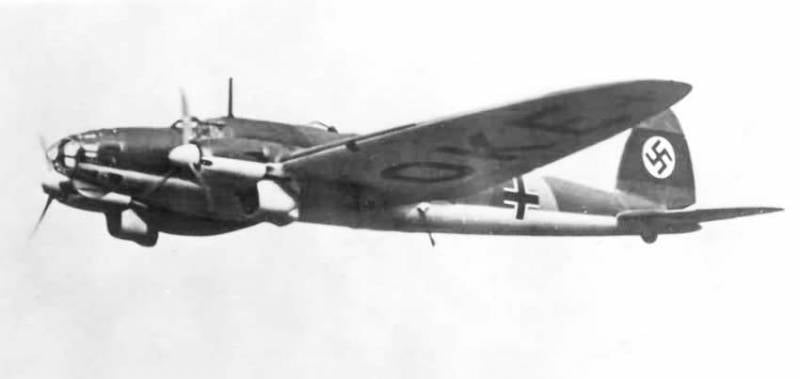
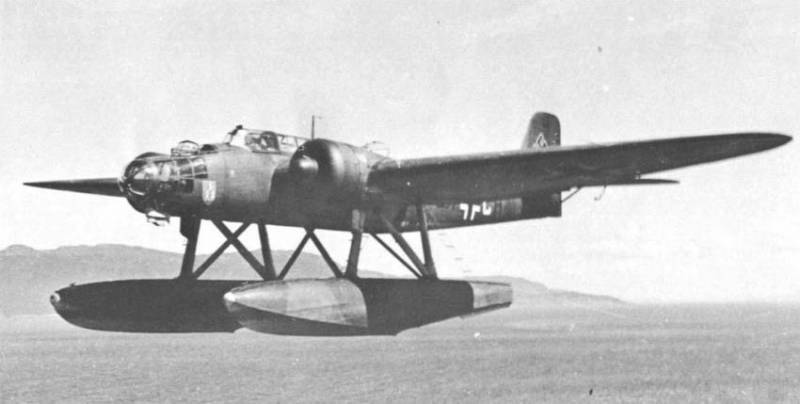
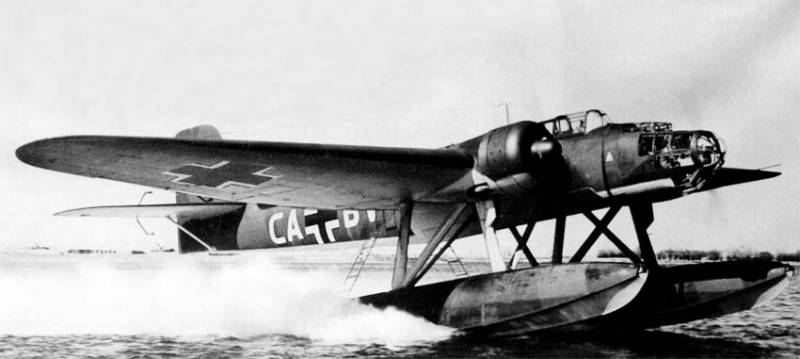
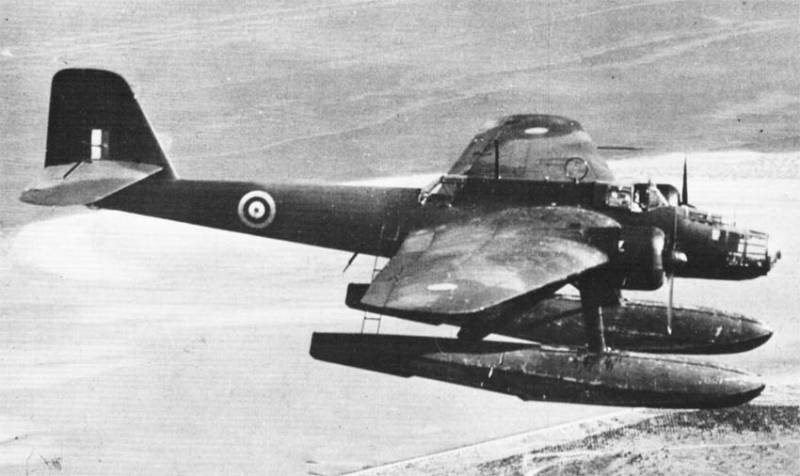

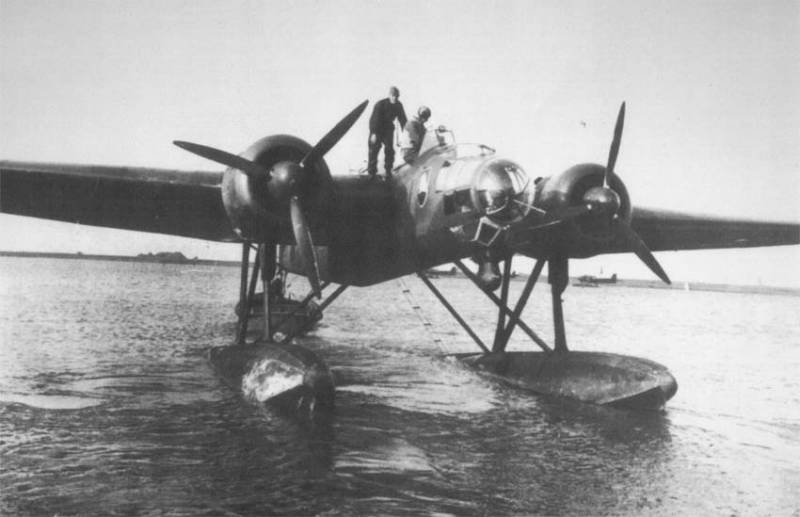
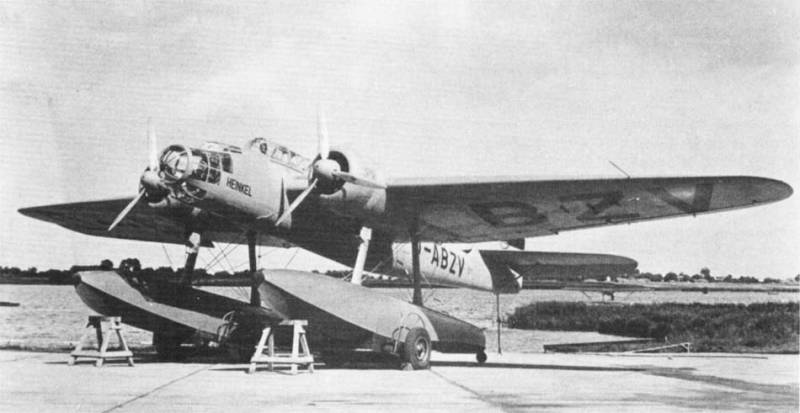
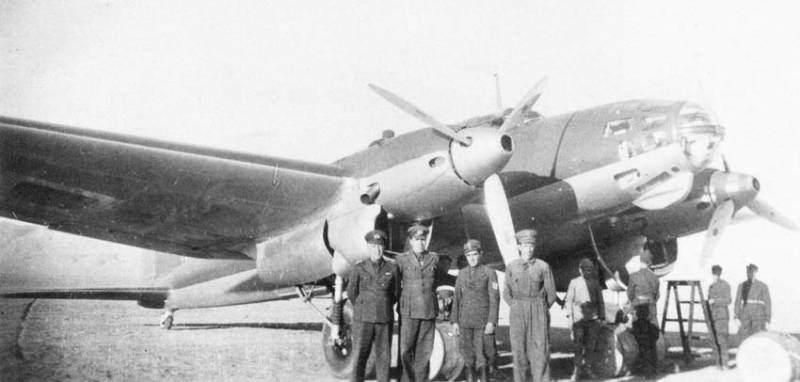
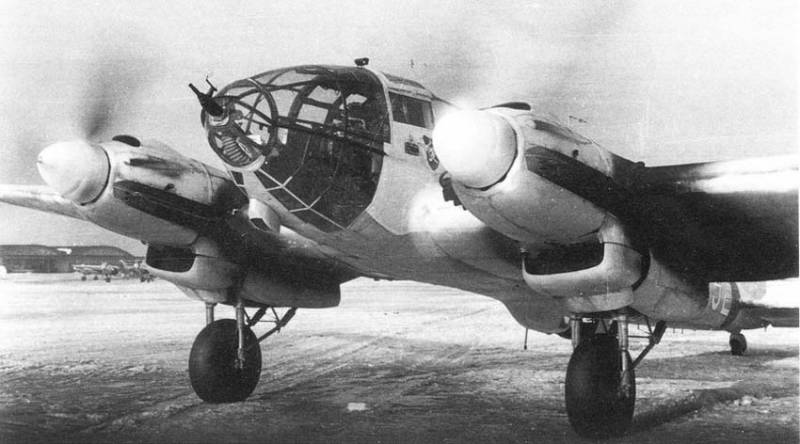
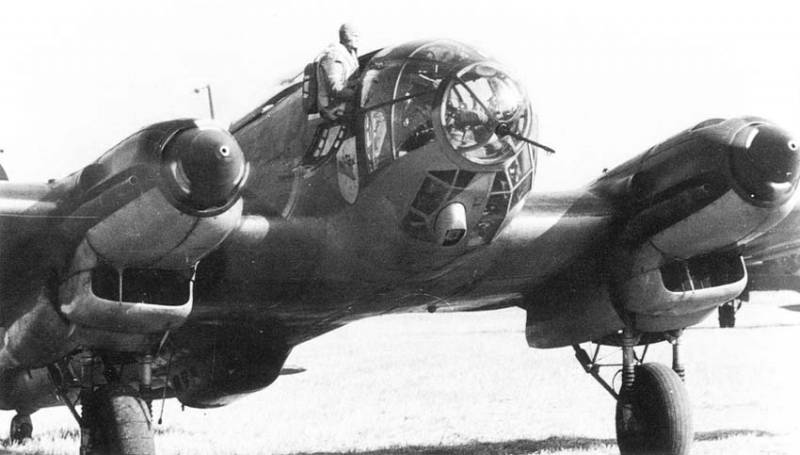
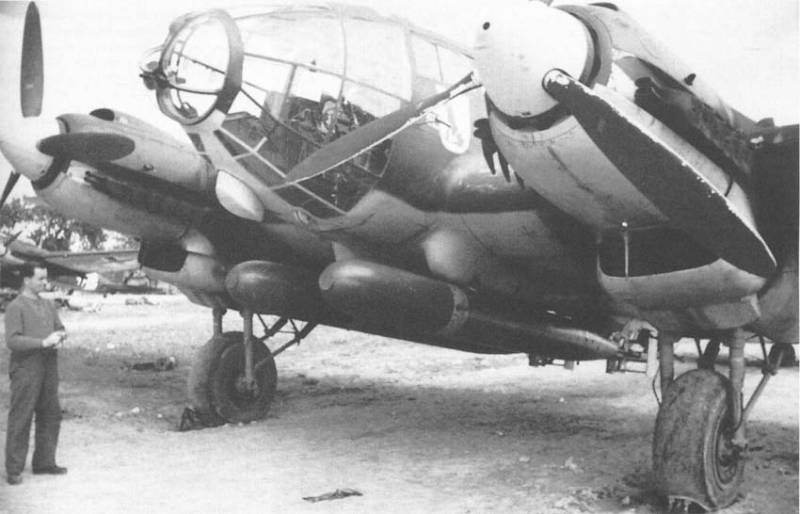



Information